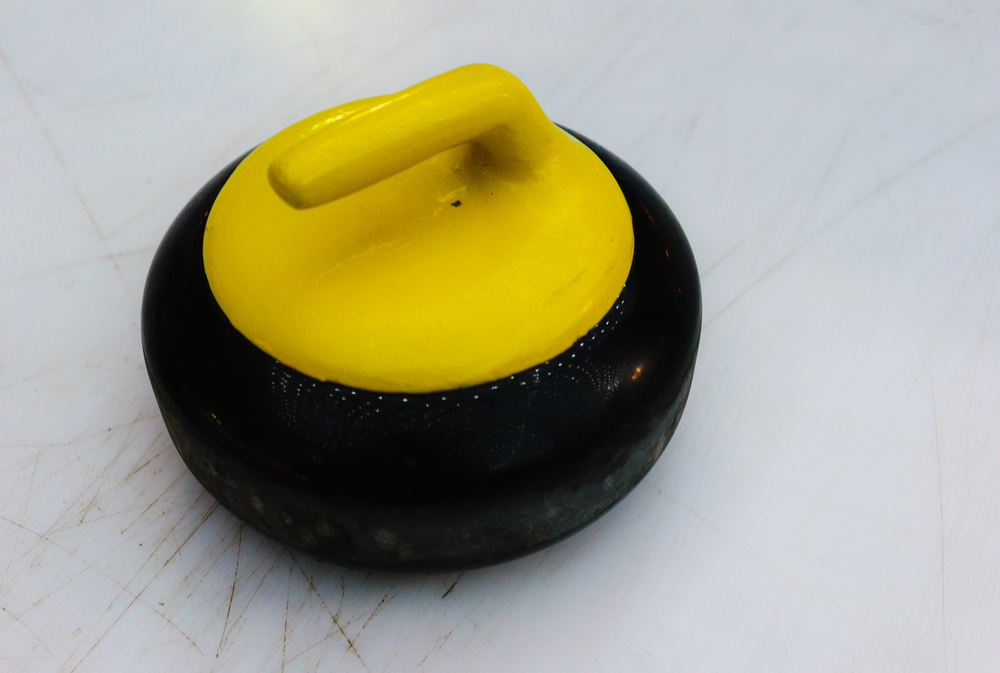Regulation curling stones weigh 38 to 44 pounds (17–20 kilos). The weight can vary based on the size and density of the granite used to make the stone. Because curling stones are also allowed to have slightly different sizes, one stone may weigh several pounds more or less than another. Lighter stones travel further across the ice with less effort, while heavier stones are better at moving other stones when they collide.

The Weight of a Curling Stone
Curling stones have a standardized weight to ensure consistency and fairness in the sport. According to the World Curling Federation’s (WCF) rules, a curling stone must weigh between 38 and 44 pounds (17–20 kilos). Most curling stones used in competitions and clubs fall within the upper end of this range, weighing around 42 pounds (19.05 kilograms).
Factors Influencing the Stone’s Weight
Although curling stones must fall within a regulated weight range, there are several different reasons one stone may be heavier or lighter than another. These reasons are:
Material
Curling stones are traditionally made from a rare, dense, and water-resistant granite called “blue hone” or “common green” granite. This specific type of granite is primarily found on Ailsa Craig, an island off the coast of Scotland. The stone’s weight is directly influenced by the density of the granite used in its construction.
Size and Shape
A curling stone’s dimensions also contribute to its weight. The WCF specifies that a curling stone should have a maximum circumference of 36 inches (91.44 centimeters) and a height between 4.5 and 5.5 inches (11.43 and 13.97 centimeters). While the size may vary slightly, the stones must still adhere to the standardized weight requirements.
Impact of the Stone’s Weight on Gameplay
The weight of a curling stone significantly affects its performance on the ice. A heavier stone requires more force to propel it across the ice, while a lighter stone requires less effort. The stone’s weight can influence the way it interacts with the ice and other stones, impacting the overall strategy and outcome of the game.
Speed and Distance
A curling stone’s weight directly impacts the distance it travels across the ice. Heavier stones require more force to slide, but they also maintain their momentum for a longer distance, making them less susceptible to the effects of sweeping. Lighter stones, on the other hand, are more easily influenced by sweeping and may travel a greater distance with the same amount of force applied.
Collision with Other Stones
When a curling stone collides with another stone, its weight plays a significant role in determining the outcome of the collision. A heavier stone is more likely to move the other stones upon impact, while a lighter stone may not have the same effect. Understanding how the stone’s weight influences these interactions is essential for developing effective strategies during a curling match.
The Role of Stone Weight in Curling Strategy
In curling, a player’s ability to control and manipulate the stone’s weight is critical to their success. Players must learn to gauge the appropriate amount of force required to propel the stone, taking into account its weight and the ice conditions. This skill, known as weight control, is a fundamental aspect of curling strategy and a key factor in a player’s overall performance.
By understanding the importance of the curling stone’s weight and mastering weight control, players can make informed decisions and execute precise shots during a match. This knowledge allows them to adapt their strategies based on the specific characteristics of the stones and ice conditions, ultimately contributing to their success in the fascinating and strategic sport of curling.


